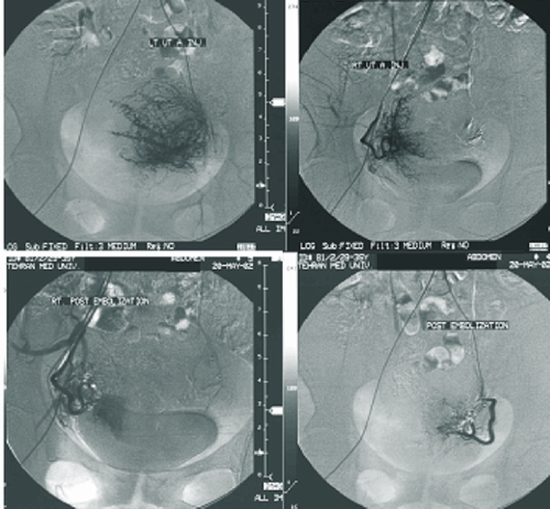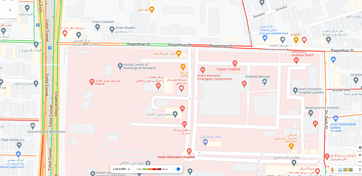Uterine artery embolization for symptomatic uterine fibroids: prospective study on 102 patients in Iran

To evaluate the safety, efficacy an d complication rate of uterine artery embolization in symptomatic fibroid patients in Iran. Patients and
A hundred and two patients aged 20-48 years (mean age: 35.7 ±6.4 years) with symptomatic fibroids entered th e study from September 2001 to November 2004. The most common presenting symptom was increased menstrual bleeding, which occurred in 74.5% of all patients. Urinary symptoms occurred in 43%, and bulk-related symptoms were seen in 63.7 % of our patients. We performed bilateral UAE (uterine artery em bolization) using PVA (pol yvinyl alcohol) particles (500-710 micron) and assessed the patients before UAE and at regular follow- ups at 1, 3, 6 and 12-month intervals by questionnaires / interviews and ultrasound. MRI without gadolinium (Gd-DTPA) injection was done before emboliz ation and at 6 and 12 months after the procedure.
By Friedman test, sequential follow-up (up to 12 months) showed that the vaginal bleeding severity significantly decreased (p <0.0001), with menorrhagia resolving in 59.4% of patients at 1 month, and in 69% at 12 months. The mean uterus volume decreased 38.5 ±30% after 12 months. The paired t-test showed that dominant fibroid volume changed from 273.7±439.2 cm3 to 112.1±141.6 cm3 at month 6 (n=58, p=0.001) and from 246.1±314.5 cm3 to 70.1±73.5 cm3 at month 12 (n=41, p<0.0001). The initial size of the fibroids did not affect the success rate.
The study showed the high efficacy of UAE in controlling fibroid related symptoms, with only few complications.





ارسال نظر